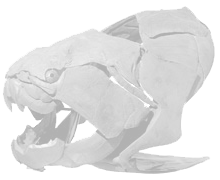| Scientists discover how bleach kills germs after over 200 years
2008-11-15 09:09 UTC |
It seems that hypochlorous acid, the active ingredient in bleach, attacks proteins in bacteria, causing them to clump up much like an egg that has been boiled, a team at the University of Michigan reported in the journal Cell on Thursday.
The discovery, which may better explain how humans fight off infections, came quite by accident.
When they exposed the bacteria to bleach, the heat shock protein became active in an attempt to protect other proteins in the bacteria from losing their chemical structure, forming clumps that would eventually die off.
"Many of the proteins that hypochlorite attacks are essential for bacterial growth, so inactivating those proteins likely kills the bacteria," Marianne Ilbert, a postdoctoral fellow in Jakob's lab, said in a statement.
The researchers said the human immune system produces hypochlorous acid in response to infection but the substance does not kill only the bacterial invaders. It kills human cells too, which may explain how tissue is destroyed in chronic inflammation.
LINK
Comments:
All comments are filtered before moderator review.
Only common ASCII characters allowed.
Comments are truncated to 2000 characters.
Names are also kept short by truncation.
|



